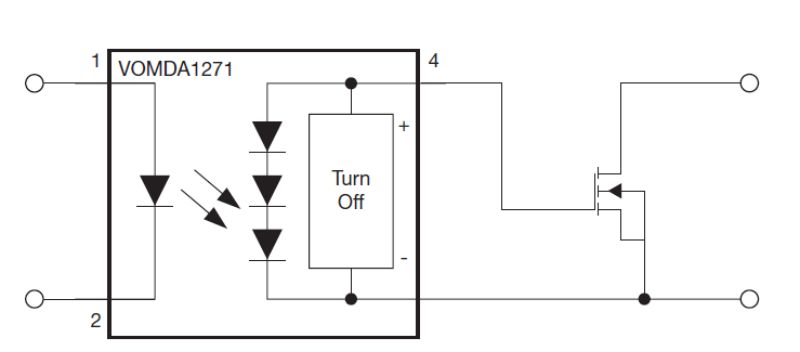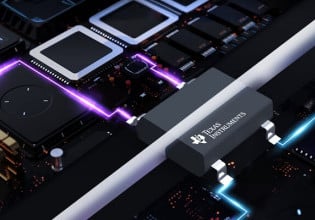Vishay Optical Driver for EVs Features Fast On, Off Responses
The VOMDA1271 optocoupler from Vishay is AEC-Q102 qualified and features an integrated fast turn-off circuit for isolated FET driving applications in electric and hybrid electric vehicles.
Vishay has released an optically isolated MOSFET driver. The VOMDA1271 optocoupler is fully AEC-Q102 qualified and designed for hybrid and electric vehicle (EV) applications, including battery management systems (BMS), pre-charging circuits, and wall chargers.
EV powertrain battery system. Image used courtesy of EE Power
Along with a fast turn-on time, robust drive capabilities, and compact size, the isolated driver also features an integrated fast turn-off feature to help comply with automotive application requirements.
The VOMDA1271 is constructed for simplicity and flexibility with a design that eliminates the need for an external supply and is capable of microcontroller operation through a general-purpose I/O (GPIO) pin.
Signal Isolation in Battery Management Systems (BMS)
In an EV or hybrid EV, the battery management system (BMS) monitors the vehicle’s battery pack to ensure safe operation through its charge and discharge cycles.
Modern EV battery buses typically operate at voltage levels between 400 V and 800 V, with newer designs pushing to 1000 V or higher as manufacturers seek more efficiency and performance, specifically range and charge times.
For safe BMS operation, signals must be relayed across the isolation boundary between the low-voltage (12 V or less) monitoring, control and sensing circuitry, and the high-voltage battery bus.
Isolating signal paths (red) in a high voltage BMS. Image used courtesy of Vishay
For signal-level applications, including MOSFET driving, optically isolated devices like the VOMDA1271 are an excellent choice for safely relaying signals across a high-voltage isolation boundary.
Infrared Optical Isolation
Contained in a compact, surface-mount SOP-4 package, the VOMDA1271 integrates an infrared LED that can generate photodetector (PD) output drive currents as high as 35 µA across a 3750 VRMS isolation boundary.
With a 20 mA LED drive signal, the driver can generate an output open-circuit voltage of 8.5 V (typical) from the PD array. The strong output drive capability eliminates the need for an external supply, simplifying circuit designs.
Single MOSFET driver with integrated turn-off. Image used courtesy of Vishay
According to Vishay, the 0.05 ms switch-on time of the VOMDA1271 is twice as fast as competitor solutions, an advantage for higher frequency signals or applications that necessitate quick response times. The integrated fast turn-off circuit produces a faster turn-off time than any other MOSFET driver in the industry.
Integrated Fast Turn-Off for Automotive
The test circuit for the VOMDA1271 uses capacitive and resistive loads in parallel to simulate the input capacitance and resistance characteristics of the MOSFET gate and gate drive circuitry.
With the integrated turn-off circuit, energy from the MOSFET gate capacitance can be quickly discharged, allowing the device to turn off in about 80 µs.
On/Off test circuit and waveforms. Image used courtesy of Vishay
For high-energy automotive applications like battery packs and charging systems, a quick response time to command signals can be essential to vehicle safety and help prevent failures that could have catastrophic consequences.
Vishay’s MOSFET driver is now available via global electronics distributor Rutronik.



_in_a_high_voltage_BMS.jpg)






